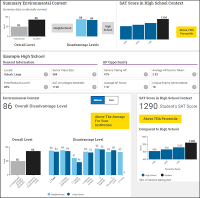|
SAT Board Abandons 'Adversity Score'
August 27, 2019
The "adversity score" is no more. The College Board, the New York-based nonprofit that oversees the popular college entrance examination the Scholastic Achievement Test (SAT), has dropped the idea of adding a score to encapsulate a college or university applicant's economic hardship. David Coleman, CEO of the College Board, said that the information used to determine that score would still be available to admissions officials in the form of a tool called Landscape but that the all-encompassing total number would not. Widespread opposition from parents and university officials played a part in the decision, Coleman said. The College Board included 50 schools in a beta test of the adversity score in 2018; the plan was to include those schools and 150 more later this year, in plans announced in May 2019. The program began in 2015. College Board officials said that the goal of including the adversity score was to offset a perceived advantage enjoyed by students from higher economic backgrounds and that the results of that beta test helped disadvantaged students achieve that goal. To determine the score, the College Board planned to use a total of 15 factors that incorporate a student's economic and social background. Among those factors are these:
|
|
Social Studies for Kids
copyright 2002–2024
David White



 educational level of the student's parents
educational level of the student's parents
